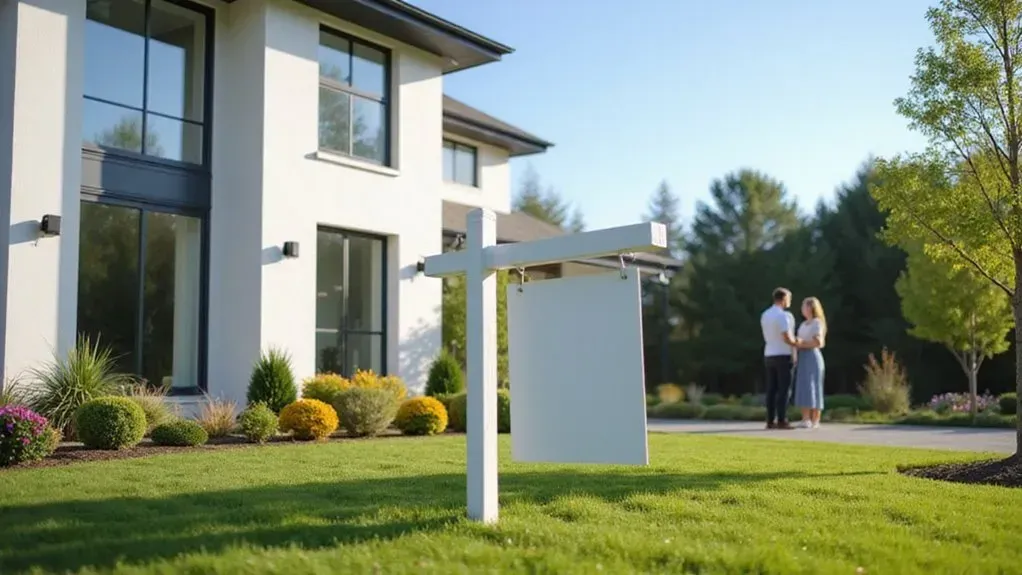
A fire can devastate your property, cutting its value by up to 30% in just one night. This sudden loss leaves you with a tough choice to make. Should you rebuild or sell as-is?
The aftermath of a fire brings stress, financial strain, and emotional turmoil. Your home, once a safe haven, now feels like a burden. Deciding the next step can be overwhelming. But don’t worry, there’s a way to navigate this challenge with clarity.
Restoration or selling as-is depends on your goals and budget. We’ll help you weigh both options carefully. This blog will guide you to make the best decision for your situation.
Key Takeaways
- Fire damage restoration rebuilds property, increasing market value, but requires significant time and costs.
- Selling as-is avoids repair expenses and speeds up transactions with quicker closings.
- Restoration poses health risks from contaminants like soot if not properly cleaned.
- As-is sales attract investors seeking bargains, though offers are typically lower.
- Restoration costs range from $3,000 to $50,000+, while as-is saves upfront financial burden.
Understanding the Impact of Fire Damage on Your Property
As you assess the aftermath of a fire on your property, you’ll first need to consider the extent of structural damage and the safety risks it poses. Beyond the visible destruction, you’re also facing hidden threats from smoke, soot, and water contamination that can compromise air quality and materials.
Understanding these impacts is crucial to making an informed decision about restoration or selling as-is. It’s essential to conduct a thorough damage assessment to accurately gauge the full extent of destruction before deciding on the next steps.
Structural Damage and Safety Concerns
Fire damage seriously weakens your home’s structure. It can harm beams, walls, and floors with high heat. If ignored, warped materials or cracked foundations might cause dangerous collapses.
Beyond what you see, unstable areas create real hazards. If not addressed, these weak spots could injure someone. You must act fast to avoid bigger problems.
Professional help is often needed after a fire. Engineers can check load-bearing parts and suggest fixes. If you delay, legal or safety issues may arise.
Don’t ignore the risks of a damaged property. If you plan to live in or sell it, resolve issues first. Acting quickly safeguards your home and well-being.
Smoke, Soot, and Water Contamination
Fire causes clear damage, but smoke, soot, and water create hidden problems. These issues affect your property and health silently. If ignored, they can worsen over time.
Smoke leaves toxic particles that harm your lungs when inhaled. Soot forms acidic layers that damage surfaces and air. If not cleaned, it risks your breathing.
Water from firefighting soaks into walls and floors, causing moisture. This dampness can lead to mold, a serious health threat. If untreated, it spreads quickly.
Chemicals used to fight fires leave dangerous residues behind. These create environmental risks that linger on your property. If neglected, they harm your surroundings.
You must act fast to tackle these hidden dangers. Addressing them early safeguards your home and well-being. If delayed, problems grow bigger.
What Is Fire Damage Restoration?
When considering fire damage restoration, you’re looking at a detailed process to repair and rebuild your property after a devastating blaze. You’ll need to understand the steps involved, from smoke and soot cleanup to structural repairs, as well as the significant costs tied to each phase. Let’s break down how this restoration works and what financial impact you can expect.
Additionally, it's important to note that unchecked damage can lead to serious issues like mold growth and related health risks if not addressed promptly.
The Restoration Process Explained
Fire damage restoration revives your property after a disaster. It involves experts who carefully check and fix every issue. If damage is severe, they ensure a full recovery plan.
The process starts with a detailed inspection. Specialists assess the harm to form a specific strategy. If overlooked, small issues could worsen later.
Next, they handle debris removal. Charred items are cleared out quickly and safely. If left behind, debris might cause further problems.
Then, cleaning and sanitizing take place. Advanced tools remove smoke and soot from surfaces. If not cleaned, residue can harm your health.
Finally, reconstruction rebuilds damaged areas. Professionals use eco-friendly materials for sustainable results. If done right, your property regains its original charm.
You can track progress through Virtual Tours. This lets you stay updated without being on-site. If issues arise, you can address them remotely.
Costs Involved in Fire Damage Restoration
Fire damage restoration costs can range from $3,000 to $50,000 or more. The price depends on damage severity, property size, and location. If damage is extensive, expect higher expenses.
Structural repairs, smoke removal, and replacing items add to the bill. Property size and location also impact the total cost. If hidden issues arise, costs might increase unexpectedly.
Negotiating with contractors can help reduce expenses. Inflation may raise material and labor prices in tough economic times. If you plan well, you can avoid surprise costs.
Careful budgeting is essential for fire damage restoration. Factor in delays or extra damages when planning. If you prepare, financial burdens won’t catch you off guard.
Pros and Cons of Restoring a Fire-Damaged Property
As you consider restoring a fire-damaged property, you'll find significant benefits, like increasing the home’s market value and preserving its personal or historical importance. However, you must also weigh the challenges and risks, including high costs and the potential for hidden structural issues that could complicate repairs.
Let's examine these factors to help you make an informed decision about restoration. Additionally, a thorough property damage assessment can reveal hidden issues and aid in setting realistic expectations for repair costs and timelines.
Benefits of Restoring
Restoring a fire-damaged property helps you reclaim your space. It adds value if you invest in rebuilding wisely. This process also improves both looks and use with eco-friendly options.
A restored home can sell for a higher price. You can customize it to fit your personal style. If done well, it boosts the neighborhood’s overall appeal.
Restoration brings back a sense of home and comfort. It creates a safe, clean space for better health. If you rebuild, you turn loss into a fresh start.
Challenges and Risks
Restoring a fire-damaged property brings several challenges. Health risks from soot, ash, and toxic residues are a major concern. If cleanup isn’t thorough, you might face respiratory problems or long-term exposure issues.
Specialized equipment and professionals are often needed for safe cleanup. This can increase costs and complicate the process. If you skip this step, health risks could worsen.
Utility disruptions are another hurdle during restoration. Services like water, electricity, and gas might be cut off for safety. If delays happen, your timeline could stretch longer than expected.
Coordinating with utility providers and contractors can be tough. This logistical challenge often slows down the project. If not managed well, it adds to your stress.
Structural damage and hidden issues also pose risks. Problems like mold or weakened foundations might be hard to spot. If ignored, these could lead to bigger repair costs.
What Does Selling As-Is Mean After a Fire?
When you consider selling your fire-damaged property as-is, you're opting to sell it in its current condition without making any repairs or improvements. This process means you won't invest time or money into fixing the damage, but it also typically attracts specific buyers like investors or cash buyers who specialize in distressed properties.
Have you thought about who might be interested in purchasing a home with fire damage and what drives their decision to buy as-is? Selling as-is to a cash buyer like Jay Primrose Properties can provide a quick and hassle-free solution for properties in poor condition.
Definition and Process of As-Is Selling
Selling a property "as-is" after a fire means offering it in its current damaged state. You won’t make any repairs or improvements before the sale. This saves time and money, but honesty about the damage is essential.
The process starts with full disclosure of all known fire damage to potential buyers. If you hide issues, legal problems could arise. Transparency builds trust during the sale.
Next, set a fair price that reflects the property’s damaged condition. Investors often buy as-is homes at lower costs. If priced too high, buyers might walk away.
Then, prepare legal documents like buyer waivers for protection. These ensure buyers accept the property’s state and risks. If waivers are missing, disputes may occur.
Finally, market the home clearly as an as-is property in listings. Highlight the condition to attract the right buyers. If marketed well, platforms like As Is Auctions can help.
Who Buys Fire-Damaged Properties As-Is?
Many people and groups buy fire-damaged properties as-is for potential profits. Real estate investors often seek these homes as bargains. They aim to rebuild and sell them for a good return.
Overseas Buyers also show interest in such undervalued properties. They take risks on fire damage for future gains. If markets grow, their investments could pay off well.
Syndicate Groups pool money from several investors to buy these homes. They have funds for big repairs and renovations. By selling as-is, you reach buyers ready to transform your property.
Pros and Cons of Selling a Fire-Damaged Property As-Is
When considering selling your fire-damaged property as-is, you'll find distinct advantages that can simplify the process, such as avoiding costly repairs and closing deals faster. However, you must also weigh the drawbacks, like potentially lower offers and a smaller pool of buyers willing to take on the risk.
Let's examine these benefits and limitations to help you make an informed decision. Additionally, being transparent about the extent of the damage can build trust with potential buyers, especially when targeting cash home buyers.
Advantages of Selling As-Is
Selling a fire-damaged property as-is saves you time and effort. It cuts out the need for costly repairs. This option helps you move forward quickly.
If you choose this path, privacy remains intact. You limit strangers entering your home for inspections. This keeps your personal matters safe.
Speed is a major benefit of selling as-is. Deals close faster without repair delays. You can avoid long waiting periods.
Cost savings are another plus to consider. Skip spending money on big renovations upfront. This reduces your financial burden.
Stress drops when you sell as-is too. Managing contractors and timelines becomes unnecessary. You gain peace of mind easily.
Finally, this appeals to certain buyers. Investors often seek fixer-uppers at lower prices. If they buy, you benefit quickly.
Drawbacks and Limitations
Selling a fire-damaged property as-is has clear benefits, but it also comes with serious drawbacks. You will likely get lower offers since buyers consider repair costs. If the market is tough, finding buyers could be harder.
Inflation makes things worse by raising material costs for repairs. This can scare off investors looking for a good deal. If costs keep rising, offers may drop even more.
Labor shortages add to the problem for potential buyers. With fewer skilled workers, renovations take longer and cost more. If delays happen, buyers might offer less.
Lastly, selling as-is limits your negotiation power. The label suggests you need to sell quickly. If you choose this path, think carefully about these issues.
Comparing Financial Outcomes: Restoration vs As-Is Sale
When weighing the financial outcomes of fire damage restoration versus selling as-is, you must first consider the potential returns from investing in repairs. Restoration can boost your property’s market value, but you’ll need to analyze if the costs outweigh the increased sale price.
On the flip side, selling as-is might yield quicker net gains, so you’ve got to crunch the numbers to see which option truly maximizes your profit. Additionally, selling as-is to cash home buyers can expedite the process and eliminate repair costs entirely.
Potential Returns from Restoration
Restoration of a fire-damaged property can be a smart investment if costs and benefits are weighed properly. A good repair may raise your property’s market value significantly. You must assess if the effort will truly pay off.
Several factors help determine the potential returns from restoration. Consider the total cost of repairs, permits, and labor first. If expenses are too high, the project might not be worth it.
Market trends also play a big role in your decision. Research if renovated homes are in demand in your area. This can help predict if you’ll make a profit.
Time is another important aspect to think about. Factor in how long the restoration might take before seeing returns. Delays could affect your overall gains.
Lastly, the quality of work matters a lot. High-quality repairs ensure lasting value and a better appraisal increase. If done well, your property’s worth could rise noticeably.
Net Gains from As-Is Sale
Selling a fire-damaged property as-is can bring quick financial relief. This choice avoids expensive repairs and long delays. If you act fast, you might see gains sooner than expected.
The sale price often matches the property’s damaged state. You must use smart negotiation to get the best deal. Research similar sales to support your asking price.
Offering incentives can attract buyers like investors or flippers. If you provide closing cost help, interest may increase. Flexible timelines could also make your property more appealing.
While net gains might be less than a fixed property, savings matter. You avoid upfront repair costs this way. Holding expenses also drop, making this a smart choice often.
Timeline Considerations: Which Option Is Faster?
When you're weighing the timeline of fire damage restoration against selling your property as-is, consider the significant time investment required for repairs. Restoration can take months, depending on the extent of the damage and contractor availability, delaying your ability to move forward.
On the other hand, selling as-is often moves much quicker, potentially closing in weeks if you find the right buyer. Cash buyers, in particular, can expedite this process by offering faster closings without the delays of financing or inspections.
Time Required for Restoration
Restoration of a fire-damaged property takes much longer than selling it as-is. If you opt for restoration, expect a process that could last several months. The timeline depends on various factors that might delay your plans.
Severe damage to the structure can greatly extend the repair time. If the damage is extensive, rebuilding may take extra effort. Weather issues, like rain or snow, could also stop work temporarily.
Material shortages might slow down the restoration process. If supplies are delayed, your project could face setbacks. Finding skilled contractors can add weeks to the schedule too.
Careful planning is essential for a successful restoration. If you overlook key details, delays are likely to happen. Patience is crucial during this long journey.
Speed of Selling As-Is
Selling a fire-damaged property as-is is a much quicker option than fixing it up. This choice helps you avoid long repair times that could stretch over months. If you go this route, you can list the home right away.
Quick Buyers, such as investors or cash buyers, often target these distressed properties. They focus on fast deals and can close in just one or two weeks. This is far speedier than the usual real estate market.
If repairs are skipped, you save both time and effort on restoration. These buyers usually don’t mind the property’s condition. Thus, selling as-is becomes a practical and swift solution.
Emotional and Psychological Factors
As you navigate the aftermath of a fire, you’re likely grappling with the emotional weight of trauma and loss, which can heavily influence your decision to restore or sell as-is. Consider how your motivation to rebuild ties into reclaiming a sense of home, while the urge to let go might offer a quicker path to closure.
These psychological factors aren’t just background noise; they’re critical in shaping your next steps. Managing these emotions by adopting a salesperson mindset can help create the necessary distance for making rational decisions.
Coping with Trauma and Loss
House fires bring devastation, causing both physical damage and emotional pain. Losing belongings and safety can feel overwhelming. If you face this, know that healing is possible with the right steps.
Many struggle with grief after such a loss. You can find help by talking to counselors or joining support groups. If you feel stuck, these connections may ease your burden.
Healing takes time, but small actions help. Try mindfulness or writing down your thoughts to reduce stress. If stress builds, these practices might calm your mind.
Support from loved ones is vital during recovery. Reach out to family or friends for comfort and strength. If you feel alone, their presence can make a difference.
Focus on tiny goals to rebuild control. Set daily tasks like cleaning or organizing to stay grounded. If you struggle, start small and build up slowly.
Motivation to Rebuild vs Letting Go
After a house fire, you face a big choice. Should you rebuild your home or sell the property as-is? This decision mixes money matters with personal feelings.
Rebuilding can feel like taking back control. It requires emotional strength and much time. If you choose this, ensure you’re ready for the challenge.
Selling might bring quick closure instead. It could mean leaving behind a meaningful place. If selling feels right, think about starting fresh elsewhere.
Your choice also involves deeper thoughts. Do you restore the past or seek new beginnings? This reflects who you are and your values.
Consider your resilience before deciding. If you’re unsure, weigh both options carefully. Your decision will show what matters most to you.
Insurance Coverage and Its Role
As you navigate the aftermath of fire damage, understanding your insurance coverage becomes a critical step in deciding between restoration or selling as-is. You’ll need to assess whether using your insurance payout for restoration offers a better long-term value for your property, considering repair costs and timelines.
Alternatively, cashing out with your insurance settlement and selling the property as-is might provide a quicker financial resolution, though it could impact the sale price. Selling as-is to cash buyers can also maximize your profit by avoiding costly repairs and commissions.
Using Insurance for Restoration
Dealing with fire damage can be tough, but insurance helps ease financial worry. If you know your policy, it becomes a vital tool for rebuilding. Always check what’s covered to avoid surprises during claims.
Insurance disputes and exclusions might limit your payout for certain damages. If disputes arise, don’t ignore them and act quickly. Understanding these risks keeps you prepared for challenges.
To strengthen your claim, start by reviewing your policy details. Look for coverage limits and any exclusions mentioned. If unclear, ask your insurer for clarification.
Next, document all damage with clear photos and save receipts. This evidence supports your claim and proves losses. If possible, record everything soon after the incident.
File your claim without delay to avoid complications. Delays can slow down payouts or cause denials. If needed, follow up with your insurer regularly.
Lastly, consider hiring a professional adjuster for help. They can negotiate disputes and maximize your claim. If disputes persist, their expertise makes a difference.
Cashing Out with Insurance and Selling As-Is
Cashing out with insurance means a fast way to get money after fire damage. You can skip long repairs and settle quickly. If your policy is clear, negotiating a fair payout becomes easier.
Selling your property as-is avoids the hassle of fixing it up. Investors often buy damaged homes for less, offering quick cash. If you choose this, you gain liquidity without repair stress.
Pairing insurance funds with an as-is sale boosts your financial return. Study your policy and market to decide wisely. If done right, you can move forward without burdens.
Local Market Conditions and Real Estate Trends
As you weigh the decision between restoring a fire-damaged property or selling it as-is, consider how local market conditions shape demand for restored homes. You'll need to assess whether buyers in your area prefer move-in-ready properties or if there's a strong investor appetite for as-is fixer-uppers.
Understanding these real estate trends can guide you toward the most profitable and practical choice. Additionally, investigating local sales data of similar properties can provide insight into current demand and pricing trends for as-is homes.
Demand for Restored Homes
Many homeowners question the demand for restored homes when choosing to fix fire damage or sell as-is. If you’re unsure, buyers often value fully restored properties based on local market trends. This depends on sustainability needs and lifestyle preferences of modern buyers.
Eco-conscious buyers look for energy-efficient upgrades in restored homes. These properties attract attention if they include green features. Their interest can boost demand significantly.
Move-in ready homes save buyers from renovation stress. If a home is fully restored, it often appeals more. This can lead to quicker sales in many markets.
Quality restorations may allow for higher pricing. If the work is top-notch, buyers might pay a premium. This could make restoring a smart financial choice.
Neighborhood trends also shape demand for restored homes. If an area is growing, restored properties often sell faster. Check local patterns to confirm this potential.
Lastly, analyze your local real estate market carefully. If restoring matches buyer expectations, you’ll likely get strong offers. Making an informed decision is key.
Investor Appetite for As-Is Properties
Savvy investors often target as-is properties like fire-damaged homes for high returns. If property values are rising locally, interest in these homes grows fast. They see big profit potential after fixing them up.
Local market conditions play a huge role in attracting investors. If an area shows growth, investors will likely compete for damaged properties. Stay aware of these trends to gauge interest.
Economic trends also shape the demand for as-is homes. Global interest in real estate can boost competition, even for fixer-uppers. If markets are recovering, expect more investor attention.
When selling as-is, understanding these dynamics is key. If growth potential is clear, investors may offer quickly. Monitor market shifts to avoid delays in selling.
Legal and Disclosure Requirements
When selling a fire-damaged property, you must navigate the legalities to ensure compliance with local and state regulations. You're required to provide full disclosure about the extent of the damage and any repairs made, as buyers have a right to know the property's true condition.
Understanding these obligations helps you avoid potential lawsuits or financial penalties down the line.
Legalities of Selling a Fire-Damaged Property
Selling a fire-damaged property involves understanding legal rules. You must follow local laws to avoid problems. If ignored, legal issues can delay or stop the sale.
Permits are essential for any repair work. Ensure safety inspections are passed before listing the property. If permits are missing, you might face fines or delays.
Check for property liens that could block the sale. Unresolved liens must be cleared beforehand. If liens exist, they can complicate ownership transfer.
Verify insurance claims related to the fire damage. Unsettled claims might affect the sale process. If claims linger, consult your insurer for clarity.
Lastly, follow local ordinances on damaged properties. These rules vary by area and must be checked. If non-compliant, you could face legal penalties.
Full Disclosure: What Must Be Shared with Buyers?
Selling a fire-damaged property requires you to reveal all known issues. This includes fire damage, structural problems, or smoke residue hazards. If you hide these, you risk facing legal trouble.
Most states demand a property disclosure statement from sellers. Failing to provide this can lead to serious consequences. Be honest to avoid misleading buyers about the home’s condition.
Sharing repair histories and insurance claims is also important. You must mention any unresolved fire-related issues as well. If you disclose everything, you build trust with buyers.
Always check local laws for specific disclosure rules. Staying transparent protects you from future liability. If in doubt, prioritize honesty over hiding facts.
Working with Professionals: Restoration Experts vs Real Estate Agents
When handling the aftermath of fire damage, you’ll need to decide whether to work with restoration experts or real estate agents, and finding reputable fire restoration companies is crucial if you opt for repairs.
Make sure you research firms with proven expertise in handling fire-related issues, checking reviews and certifications to ensure quality service. If selling as-is feels more practical, choosing the right real estate professional who understands distressed properties can make a significant difference in securing a fair deal.
Finding Reputable Fire Restoration Companies
After a fire damages your property, finding reputable restoration companies is essential for recovery. You need experts who can rebuild your home reliably. If you search wisely, you can locate the right help quickly.
Start by using online directories to list potential firms for hire. Check their reputation through customer reviews and ratings. If reviews are positive, they likely offer good service.
Verify that the company has proper industry certifications for quality assurance. Ask for references from past clients to confirm their work. If they hesitate, consider looking elsewhere for better options.
Compare quotes from different companies to understand costs and services. Ensure they have insurance for liability and worker safety. If they’re uninsured, you might face risks during restoration.
With careful research, you’ll find a trusted partner for the job. If you follow these steps, recovery becomes smoother. A good company will restore your property efficiently.
Choosing the Right Real Estate Professional
Selling a fire-damaged property as-is requires the right real estate professional. Look for someone experienced with distressed homes. If they’ve handled similar sales, they’ll know the challenges.
Start by interviewing agents to gauge their expertise. Ask about their past sales and marketing plans. If they lack clear answers, keep searching.
Verify their credentials before making a decision. Check their license, certifications, and online reviews for reliability. If credentials are missing, consider other options.
A good agent can simplify offers and negotiations. They save you time and reduce stress. If chosen wisely, they’ll manage legal issues well.
Don’t hurry when selecting your agent. Take time to find a proven expert. If unsure, ask for references to confirm skills.
Tips for Making the Right Decision
When deciding between fire damage restoration and selling as-is, start by assessing your personal priorities and long-term goals to determine what truly matters most to you. Next, analyze the costs, time, and stress levels associated with each option to understand the full impact on your resources and well-being.
By weighing these factors carefully, you’ll be better equipped to make a decision that aligns with your unique situation.
Personal Priorities and Long-Term Goals
Your personal priorities and long-term goals often decide whether to restore a fire-damaged property or sell it as-is. Think about what matters most to you right now.
If restoration builds equity or selling frees resources, choose what fits your dreams.
Consider your life vision first. Do travel or education goals outweigh owning a property? If they do, selling might be wiser.
Next, look at emotional ties to the home. Are you attached, or ready to let go? If attachment is low, moving on could be easier.
Think about your future plans too. Does restoring the property match your stability goals? If it doesn’t, selling might align better.
Finally, check your resource allocation. Can selling funds support bigger objectives? If yes, that could guide your choice.
Evaluating Costs, Time, and Stress Levels
Deciding between fire damage restoration and selling as-is involves costs, time, and stress. Restoration can be expensive with high financial demands. If contractors are out of town, travel expenses might add up.
Selling as-is could save money and time initially. However, you might get a lower offer for the property. This option still brings emotional stress when letting go.
Restoration often takes months to complete fully. It tests patience and adds daily burdens. If timelines are tight, this might not suit you.
Both choices cause stress in different ways. Restoration involves endless decisions that weigh heavily. Selling, though quicker, carries an emotional toll.
Weigh these factors before choosing an option. Calculate monetary and emotional costs carefully. If stress feels overwhelming, consider your limits.
Real-Life Case Studies and Scenarios
As you consider the options of fire damage restoration or selling as-is, let’s examine real-life examples to guide your decision. Consider a homeowner’s successful restoration journey, where strategic repairs boosted property value beyond expectations.
On the other hand, analyze a profitable as-is sale to an investor, where a quick transaction outweighed the costs of rebuilding.
A Successful Restoration Journey
A fire’s aftermath can be tough, but a successful restoration journey brings hope. Homeowners’ stories show you can rebuild with purpose. If you follow proven steps, recovery becomes easier.
Personal narratives highlight triumphs over disaster with practical tips. They often pair with Eco Restoration for sustainable rebuilding. If you choose green methods, you save money long-term.
Key lessons from real cases can guide you. First, assess damage fully with expert help to avoid surprises. If issues are missed, costs may rise unexpectedly.
Next, prioritize eco-friendly materials for better results. These options cut expenses over time. If you plan wisely, your home gains lasting value.
Also, document every step for insurance claims. Keep clear records to stay stress-free. If gaps appear, claims could get delayed.
Finally, seek community support for faster recovery. Local resources often provide vital help. If you connect early, rebuilding speeds up.
Profitable As-Is Sale to an Investor
Selling your fire-damaged property as-is to an investor can be a smart move. This path saves time and reduces stress. If restoring feels overwhelming, consider this profitable option.
Investors often look for such properties to renovate or rent out. They usually offer fast closings and cash payments. If you research local trends, you can negotiate better deals.
Real-life cases show homeowners benefiting from these sales. A homeowner in a busy city gained from an investor deal. If you act wisely, challenges can turn into rewards.
Conclusion
In conclusion, deciding between fire damage restoration and selling as-is requires careful thought. If you restore, costs and time may add up quickly. If you sell as-is, offers might be lower but faster.
Should you choose to sell, we buy houses for cash at Jay Primrose Properties. This option can save you from repair hassles. If speed matters, this could be ideal.
We encourage you to reach out to Jay Primrose Properties for help. If you’re unsure, we can guide your decision. Contact us today to discuss your next step.
Give us a call anytime at 253-697-0007 or fill out this quick form to get started today!
Get A Fair Cash Offer On Your House

About the author
Justin Baker
Justin Baker is the founder of Jay Primrose Properties, a leading cash home buying company based in Tacoma, WA. With a passion for real estate investing, Justin has helped numerous homeowners in the Pacific Northwest region sell their homes quickly and hassle-free. Justin believes that buying and selling real estate should be a seamless process and works tirelessly to ensure that his clients have a stress-free experience. With a deep understanding of the local real estate market and a commitment to exceptional customer service, Justin has established himself as a trusted and reliable cash home buyer in Tacoma and the surrounding areas.











